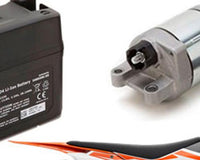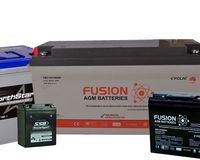The term “smart battery” is thrown a lot when describing certain battery types.

You’ll often see the term listed in descriptions on product pages to make the product look more high quality. But what exactly do manufacturers mean when they say "smart battery"?
Much like a smartphone or smart house, a rechargeable smart battery is designed to be more interactive and can communicate with its user.
Using a built-in microchip, the high-tech batteries are built with a battery management system and can communicate with the user, and a smart charger about characteristics and conditions, so it can respond and modify its charging actions accordingly.
This system also protects the battery from operating outside of its safe operating area, monitors its state, calculates secondary data and reports it and controls the batteries’ environment. It can monitor the battery’s SoH and SoC, indicating the state of the cells, and report that data to the user, so they know when they need to recharge it.
Most smart batteries also require a smart charger (also known as an Intelligent charger). This is because they need a specific charger that they can interact and correspond with.
There is a wide variety of smart batteries available, all varying in cost and specifications.
Smart batteries are normally found in laptops and smartphones. They can come as Lithium-Ion, AGM, flooded, and gel batteries. They are actually very common and found in a lot of machines and automotive applications too.
So there you have it, a quick summary of what smart batteries are. Any questions or queries, don't hesitate to contact us here at Battery Specialists .









